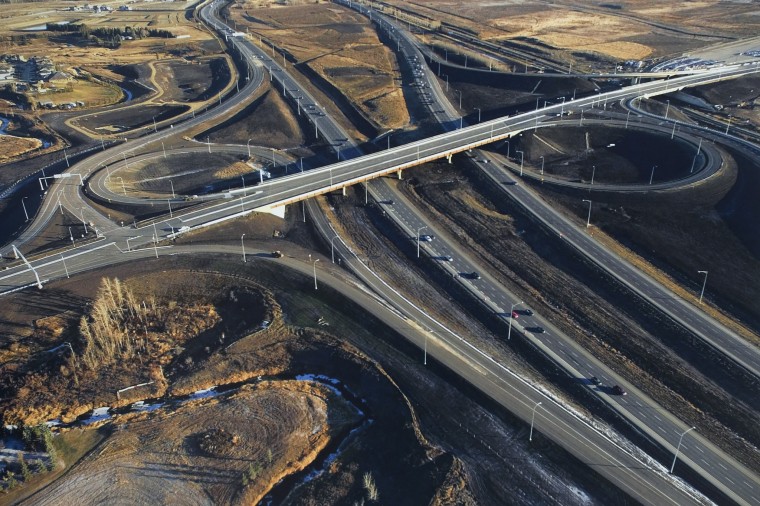
As the United States faces estimates of $3.4 billion in infrastructure needs through 2020, the nation’s public schools, airports, water treatment plants, highways and bridges and other structures and facilities continue to be shortchanged. State and local infrastructure spending is at its lowest in three decades, and the federal investment in infrastructure has dropped by half during that 30-year period. Many of the nation’s transportation infrastructure needs have been forced to the back burner.

Image by Premier of Alberta licensed under CC BY 2.0.
Last year, the nation’s 4 million miles of roadways were used to travel about 3 trillion vehicle-miles. In 2014, federal, state and local governments spent $165 billion on highways, $92 billion for capital projects and $73 million for operation and maintenance. And the federal government provided funds for only about one-fourth of that spending.
More local and state responsibility for infrastructure needs comes at a bad time for local government budgets that are already cash-strapped. In response to the infrastructure needs versus available infrastructure funding, a recently released Congressional Budget Office report outlines three approaches for federal lawmakers to consider that could make federal highway spending more productive.
It is interesting to note that although urban-area roads and highways generally are in worse shape than rural roads, more money has been spent by the federal and state governments for major repairs on rural roads. And, in spite of a decline in the impact that new highways have had on economic activity, a shift in funding toward maintaining existing roads has not materialized.
The first Congressional Budget Office (CBO) approach to making highway spending more productive involves charging motorists more for use of roads, with an option to charge more during periods of heavy traffic congestion. Some options would be to charge motorists for vehicle miles traveled (VMTs) or tolling on existing interstate highways. This would also be a revenue generator, which could provide funding for other infrastructure needs.
Other recommendations are to allocate funds based on both the benefits and costs of projects or programs. This type allocation would ensure that programs with economic benefits would be funded, instead of making allocations based on geographic location or a fixed allocation to states. The end result could be expansion of interstate highways, major repairs to urban highways and bridge repair.
And finally, the CBO suggests spending should be linked to performance measures. States that meet standards relating to such issues as traffic congestion or road quality would get additional funding and those that do not would be penalized.
Of the $3.4 trillion in infrastructure needs expected through 2020 as estimated by the American Society of Civil Engineers, $1.7 trillion of that is needed for roads, bridges and transit. Not all of the CBO approaches to make federal highway spending more productive will be received favorably. But with declines in gasoline tax revenues that were a mainstay for transportation projects and with local and state lawmakers averse to tax increases to increase revenue for transportation projects, the approaches do open up the conversation regarding infrastructure funding options.
